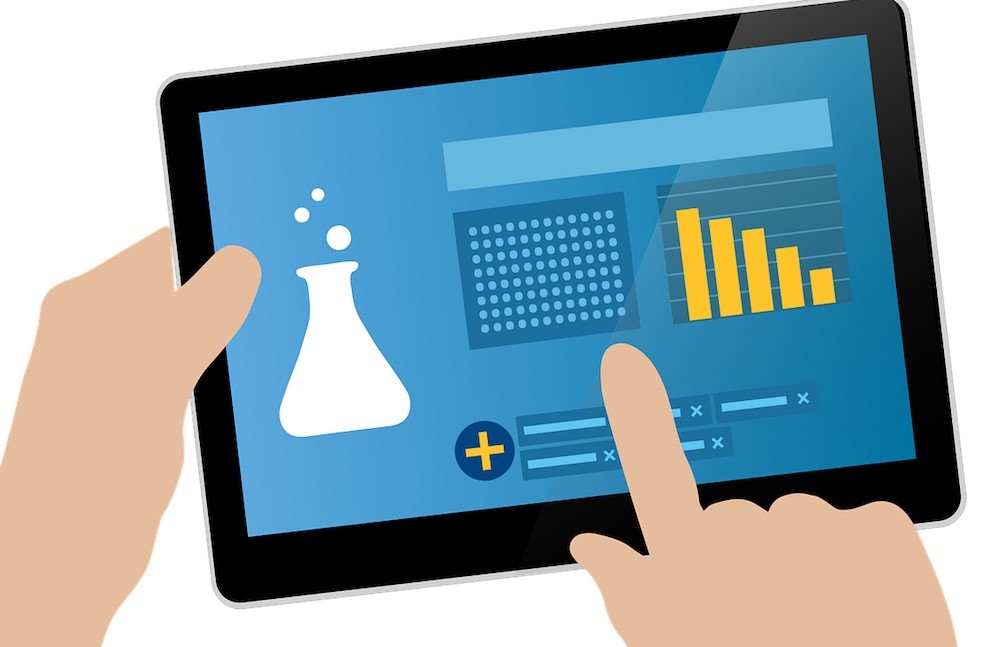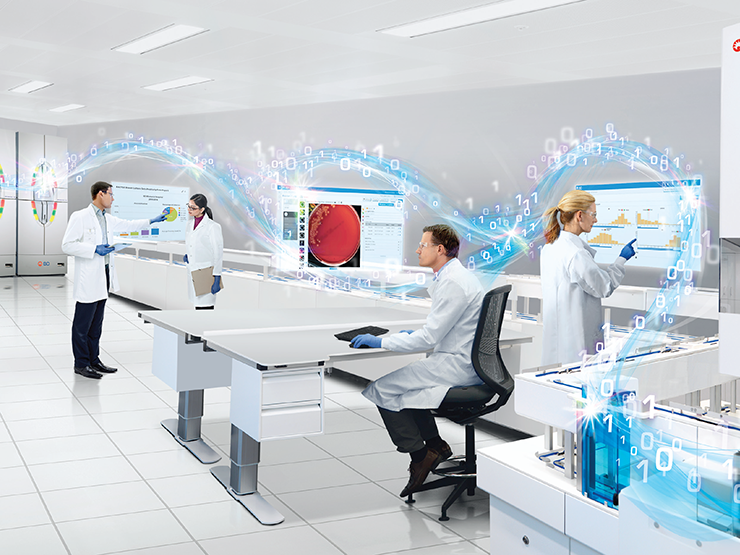Members Login

Channels
Special Offers & Promotions
New Case Study | Improving Lab Performance through Informatics
Under pressure: microbiology labs are spread thin in a changing landscape
Microbiology laboratories are facing challenges on a number of fronts: cost pressures and staff shortages constrain their ability to process samples, and increasing test volumes make it difficult for some labs to run tests and get results back to clinicians in a timely manner. Microbiology labs are constantly juggling at least four key priorities: processing results quickly and accurately; keeping costs as low as possible; communicating results efficiently to clinicians, infection control staff, nursing staff and other stakeholders; and regulatory compliance.
Cost and compliance challenges have led to greater consolidation in the microbiology lab industry as larger labs and hospitals acquire more and smaller sites. This consolidation has made hub-and-spoke model laboratories more common. Although centralisation has some benefits, this model can exacerbate the workflow challenges facing labs and complicate data reporting. Addressing these challenges is essential as microbiology labs play a critical role in ensuring that clinicians get rapid diagnostic test results to help them determine the most prudent treatment plans for their patients and prevent the spread of infections within the hospital or ward.
Diagnostics and their role in hospital management
Like microbiology laboratories, hospitals are under pressure to improve their productivity without sacrificing quality or increasing costs. Ironically, it is microbiology laboratories that in some cases play a critical role. For example, maintaining a good record of patient safety requires hospitals to correctly diagnose patients and avoid patient exposure to infectious diseases or healthcare associated infections (HCAIs). Being able to identify bacteria and viruses quickly may contribute to helping these facilities reduce instances of locked-down wards and keep HCAI rates low, which studies have shown is critical to hospital reputation. A study by MindMetre Research showed that in the UK 76% of citizens say that if they learned that their local hospital was a low performer on healthcare associated infection (HCAI) reduction, they would insist their general practitioner (GP) refer them to a hospital with a better record. Of these, 83% would be happy to travel 20 miles to be treated in a hospital with a better HCAI reduction record than their local hospital and 62% would be willing to travel 50 miles, and 48% would travel a staggering 100 miles in the same situation.[1]
Hospitals and labs often look to new diagnostics technologies to attempt to mitigate their desire to quickly identify patients with infectious conditions for isolation as one way to mitigate potential HCAI risks. But as they evaluate new diagnostic testing systems coming on the market every year, informatics solutions are sometimes overlooked. This is unfortunate as these innovations can help labs improve their workflows and help hospitals make progress against the benchmarks they look to improve, such as diagnostic test turnaround time, which can potentially help with infection control programs needed for HCAI reduction.
But it’s not just diagnostic tools that are needed. Improved informatics are also needed to expedite the clinical decision-making that results from diagnostic testing –whether it’s isolating a patient colonized with an antibiotic resistant infection, or quickly identifying and appropriately treating an HCAI. Informatics can play an important role in accelerating the reporting of results and reducing human errors that can have a negative impact on quality of care or patient outcomes.
Critical role of informatics to achieve better outcomes
In many labs, obsolete informatics can hamper productivity. Out-dated and fragmented systems require labs to carry out large amounts of work manually or rely on different middleware systems that each complete a single stage in the analysis process. These different systems are rarely integrated and may store data in different ‘silos’ or even formats, making it almost impossible to achieve a streamlined and integrated workflow or easy access across a hub-and-spoke lab network.
 A single, centralized informatics system with all instruments connected through one common middleware solution, and the flexibility to connect more instruments over time, can streamline the laboratory’s operations across multiple sites making it easier to report results to clinicians and gather information needed for compliance reporting. In contrast, insufficient informatics infrastructure can make these processes more manual and therefore more prone to human error.
A single, centralized informatics system with all instruments connected through one common middleware solution, and the flexibility to connect more instruments over time, can streamline the laboratory’s operations across multiple sites making it easier to report results to clinicians and gather information needed for compliance reporting. In contrast, insufficient informatics infrastructure can make these processes more manual and therefore more prone to human error.
Informatics can also extend the reach of key personnel. Microbiology experts have traditionally had to physically visit different labs in order to intervene and offer insight on individual cases. With hub-and-spoke lab models, this can be quite cumbersome for key experts. Improved use of informatics can reduce the need for these on-site visits by giving the expert anytime/anyplace access to the same information they would see in the lab, regardless of their location. The same virtual bacteriology/tele-microbiology capabilities can also allow busy staff to review test results from any location including their home or a congress they are attending. Together, these add-ons enable labs to provide faster turn-around, cost savings and improved efficiency, to potentially expedite decision-making by the clinical team (pharmacy, physician, infection control, nurses) guide patient care.
A more streamlined informatics approach may also have other benefits. Single user interfaces can simplify laboratorian training and onboarding, and improve ease of use by eliminating manual processes and technological redundancies inherent in multiple middleware systems.
The many workflow benefits efficient informatics tools provide to microbiology labs are clear, but what ultimately matters are the improvements to patient care. These solutions may assist clinicians to provide more timely diagnoses, potentially speeding treatment decision-making. In addition, these faster diagnoses may help hospitals prevent the spread of HCAIs and even antimicrobial resistant infections, by enabling infection control departments to isolate potential threats in a timely manner.
[1] MindMetre Research, Healthcare Associated Infections – Britons will go a long way to avoid them.
By Rajeev Sehgal, Director of Informatics at BD (Becton, Dickinson and Company)
 Rajeev Sehgal is an experienced healthcare professional with a proven track record in building and commercializing healthcare informatics solutions. He has an undergraduate degree in Computer Science and Engineering from IIT Varanasi, India and an MBA from Carnegie Mellon University, Pittsburgh. At BD, Rajeev is leading the Informatics business and is responsible for strategy creation, roadmap execution and commercialization. Prior to BD, he has held positions of progressively greater responsibility at Bayer Healthcare and helped start and build an informatics business. Rajeev is also actively involved in driving industry standards and is currently the Treasurer & Secretary of IICC (IVD Industry Connectivity Consortium).
Rajeev Sehgal is an experienced healthcare professional with a proven track record in building and commercializing healthcare informatics solutions. He has an undergraduate degree in Computer Science and Engineering from IIT Varanasi, India and an MBA from Carnegie Mellon University, Pittsburgh. At BD, Rajeev is leading the Informatics business and is responsible for strategy creation, roadmap execution and commercialization. Prior to BD, he has held positions of progressively greater responsibility at Bayer Healthcare and helped start and build an informatics business. Rajeev is also actively involved in driving industry standards and is currently the Treasurer & Secretary of IICC (IVD Industry Connectivity Consortium).
Related
Learn more about the BD Synapsys Solution and experience the power of secure, scalable connectivity.
BD Synapsys solution enables laboratories to address challenges and improve laboratory outcomes. It enables labs to maximize performance using enhanced microbiology diagnostic informatics through a single, advanced platform with an intuitive, personalized user interface. BD Synapsys solution offers integrated workflow and on-demand insights to empower laboratory staff to impact turnaround time, expedite decision making, improve productivity and simplify compliance. Watch the video to find out more.
Media Partners



